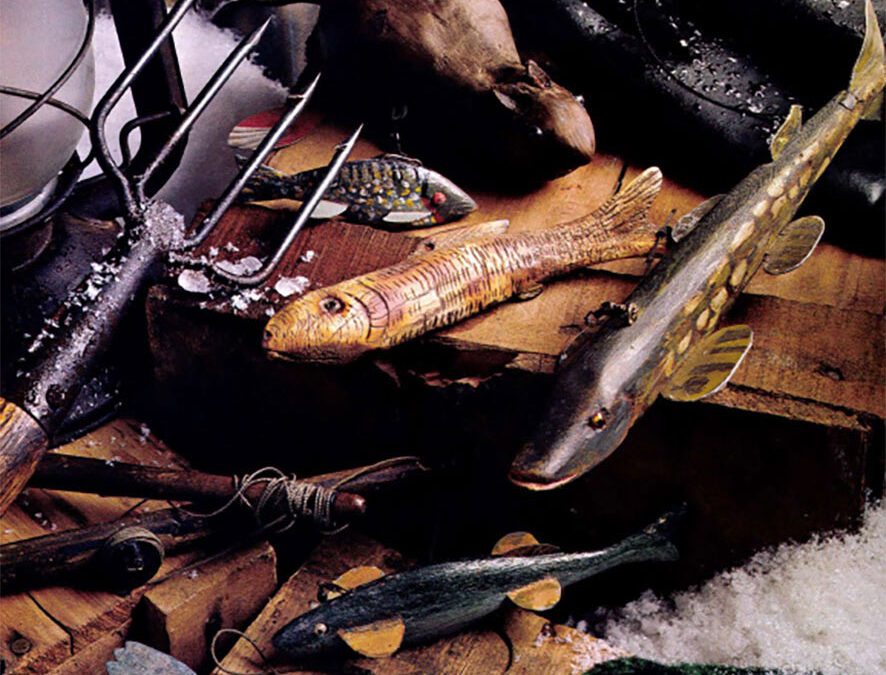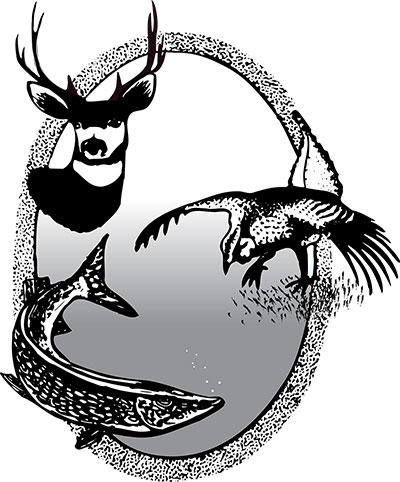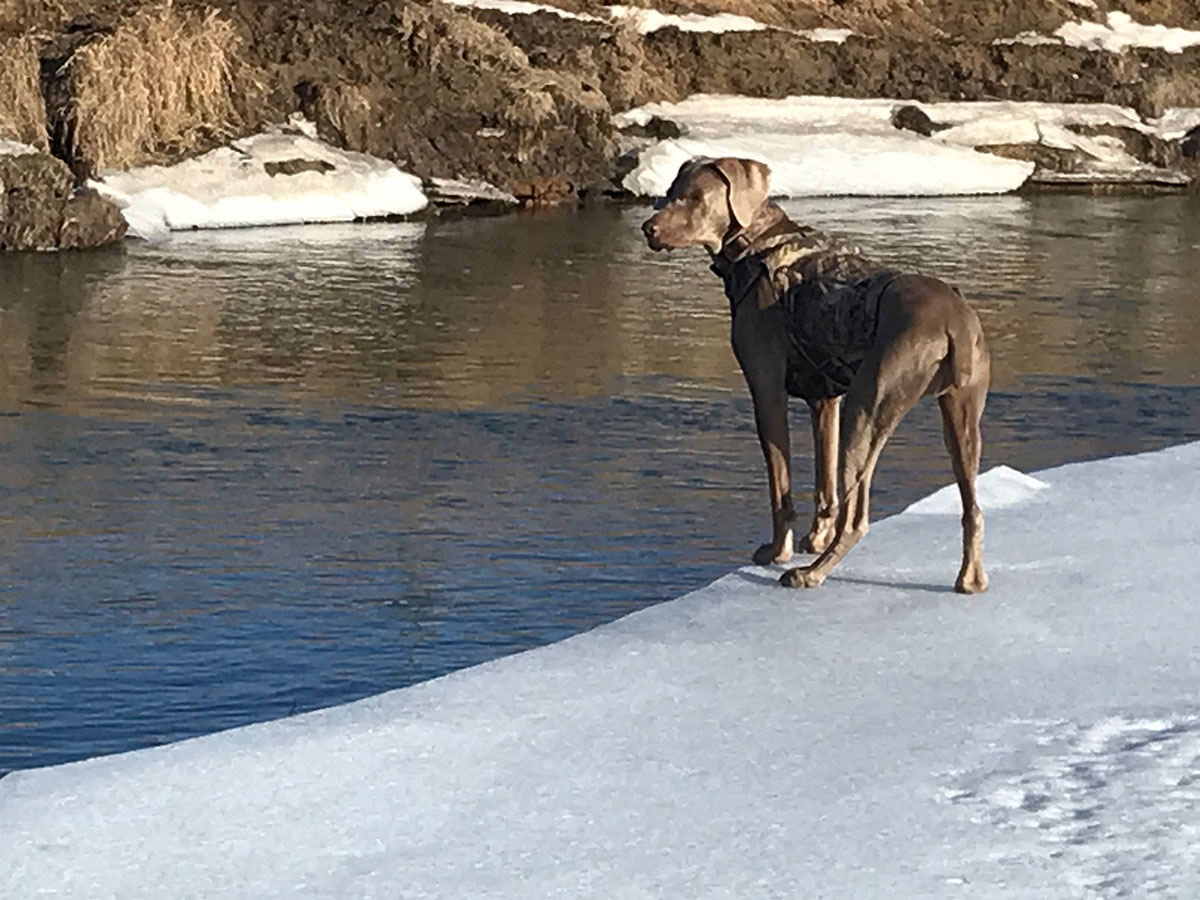Collecting fish decoys has never approached the popularity of some other folk art…but it’s started showing up at shows.
The big pike was hungry. The very cold temperature had slowed his metabolism, but it had been many days since his last meal. Slowly he moved from deeper water, sacrificing warmth, and moved toward the ice-encrusted shoreline.
Everything moved slowly in the cold, silent water of the big lake, the only light dim shadows from a distant ice and snow filtered sun.
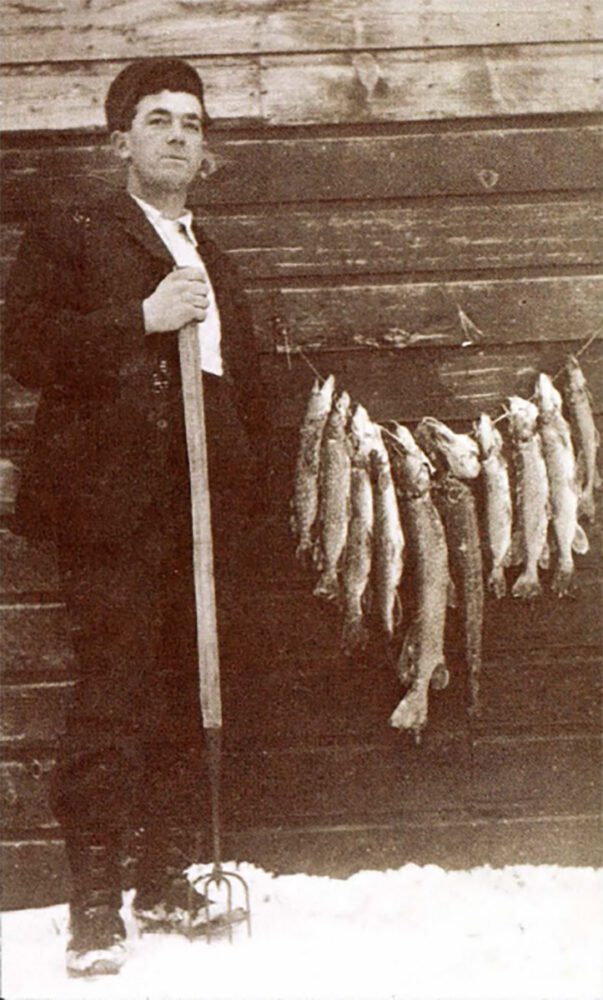
A spear fisherman and his shanty, which was darkened inside for better vision into the water. Stories are told of as many as 10,000 such shanties on one lake.
He was just passing over a large sandbar in about eight feet of water when first he sensed, then saw, a bluegill of about a half-pound in what seemed to be some sort of distress. The panfish was moving in little circles, up and down, but not really going anywhere. He moved closer, but the bluegill didn’t panic. He just kept swimming his little route.
Two more feet and he was within striking distance. Like a long shadow he slowly drifted forward, never taking his eyes from his prey.
Suddenly there was a tremendous explosion as a heavy object hit him in the back, and searing pain shot up his back to the tiny brain. Down and away he went, swimming powerfully at first, but in seconds his struggles grew more feeble, and he was hauled to the surface and through the ice, all six tines of the spear firmly embedded in his back.
This scene could have occurred 200 years ago as an Indian of the far north fished through the ice, or it could have been our granddads in the 1920s.
In prehistoric times Indians and particularly Eskimos depended on spearfishing, and they fashioned fish decoys from wood, shell, horn, and ivory. As time progressed, the early settlers of Minnesota, Michigan, Wisconsin and New England began carving fish decoys, and it eventually reached its peak in the 1920s and 1930s. Today, however, spearing is legal only in Minnesota, where it is still legal to spear northern pike.
In addition to ice, the spear fisherman had to have three pieces of equipment: the spearing house, the spear itself, and the fish decoy. The spearing house was a small shanty which covered the hole the fisherman had cut in the ice. He packed snow or loose ice around the house’s bottom edge to keep out the light, thus making it easier to see into the murky water.
The spear had extremely sharp barbs which were angled to hold the fish once the spear penetrated. Many types of shafts were used for the spear handle, one of the favorites being an old pool cue because it was strong and had the correct taper. A rope attached to the shaft enabled the fisherman to retrieve the spear when it slipped from his hand.
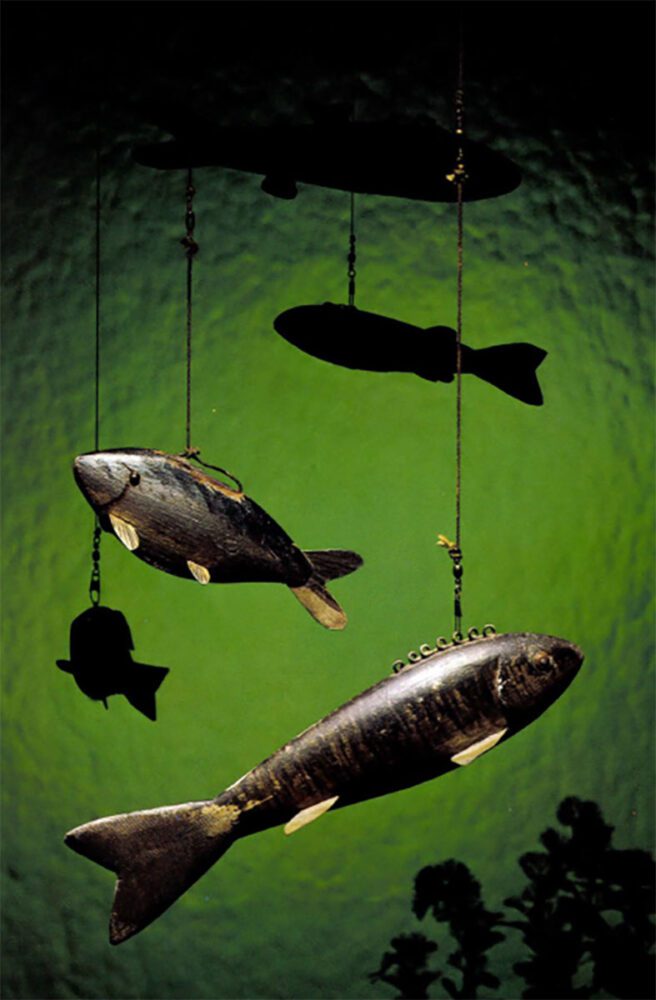
The decoys were lowered by lines into the water and then slowly raised in circular motion when a fish swam into view.
The decoy, which was lowered by a line to the bottom of the lake, was intended to lure the fish within spearing range. Of the many species of fish, the minnow types were commonly imitated; less common subjects were such gamefish species as bass, trout, bluegills, bullhead, catfish, and northern pike. Decoys were carved of wood, usually white pine, and contained a cavity which was filled with lead, tin (often recycled from old tobacco tins), or brass. This allowed the decoy to be lowered. After the addition of eyes (made of glass, tacks, beads, or hat pins) and paint, many of the decoys became works of art. However, they were only thought to be successful if they swam well, particularly if they spiraled well when raised and lowered. The spear fisherman usually carved his own decoys, but there were also some professional carvers in the early 1900s. Even such tackle manufacturers as Pflueger and Heddon and Creek Chub Bait Company produced fish decoys.
In addition to the fish or minnow spearing decoys, there were other less common decoys including the frog, turtle, and baby muskrat. Both the frog and the turtle had tin legs which acted as fins. The baby muskrat decoy was made of wood, complete with leather tail and ears. Each had an open mouth and a hole behind the head which produced bubbles that were undoubtedly used to lure northern pike and muskies. As you might guess, the frog, turtle, and baby muskrat decoys are extremely rare today.
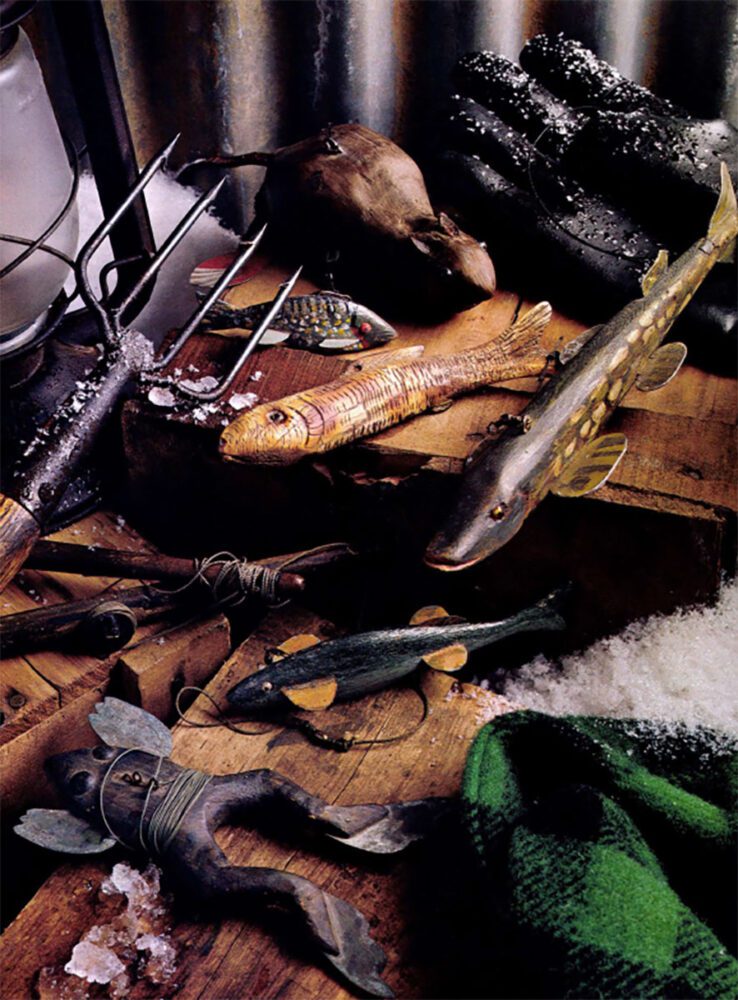
The baby muskrat decoy is made of wood and has a leather tail and ears; the frog, also of wood, and has tin legs.
The spear fisherman soon learned the importance of the color of the water’s bottom. Light sand or gravel bottoms were no problem, but a darker colored bottom made the fish’s silhouette very difficult to distinguish. My father- in-law, an old-time ice-spearing fisherman, solved this problem in a unique way. He bought several plain white china plates at the grocery store and dropped them through the ice under his spearing hole to form a light background for the movements of the fish. He reports that it worked beautifully.
The targets of the spear fishermen were primarily pike, pickerel and muskie, but any species that was unlucky enough to come within range was destined for the frying pan.
Collecting fish decoys has never approached the popularity of some other folk art, and one reason may be the small area of the country in which spearfishing was enjoyed. Today, however, more people are discovering fish decoys and these collectibles are even beginning to turn up at many duck decoy shows.
Editor’s Note: This article originally appeared in the 1984 Sept./Oct. issue of Sporting Classics.
 This captivating collection of 19 stories takes readers on a remarkable journey through Alaska. From the thrilling excavation of prehistoric tools and cultural artifacts discovered during the ambitious basement dig beneath Jake’s home to the changing landscape of moose hunting in NW Alaska, once known as the world’s best. Buy Now
This captivating collection of 19 stories takes readers on a remarkable journey through Alaska. From the thrilling excavation of prehistoric tools and cultural artifacts discovered during the ambitious basement dig beneath Jake’s home to the changing landscape of moose hunting in NW Alaska, once known as the world’s best. Buy Now
